Using Automated Technology to Create a More Robust Risk Infrastructure

Ask the Expert: SAJID ZAMAN, OPERATIONS ASSOCIATE & US ONBOARDING LEAD AT XPANSIV
Sajid Zaman has over a decade of experience in client onboarding from global financial institutions including JP Morgan, Deutsche Bank, Scotia Bank and Santander. He has a strong track record in leading client onboarding teams, managing the client onboarding function and helping in-house teams at financial institutions to build client lifecycle management tools encompassing KYC, AML and regulatory requirements. He is currently the US Onboarding Lead at Xpansiv and is working with Muinmos on the process for implementing a US-based client.
Here Sajid shares his views on automated client onboarding technology, particularly relating to risk rating methodologies…..
What do you think the biggest pain points are for the compliance function in terms of client onboarding?
One of the biggest pain points at the moment in the onboarding world relates to implementing risk rating methodologies and models. Factors in risk can change on a daily basis or on a week-to-week basis. A lot of the technology currently used by financial institutions doesn’t allow for quick, easy updates to reflect these changes and maintain agility for Compliance and/or Risk teams. There’s a fairly lengthy process to go through for technology changes and during these time delays, the financial institution increases exposure to its regulatory and AML risk; whilst also increasing manual intervention open to additional errors.
Solutions exist to combat this issue – such as Muinmos’ mRX™ which gives users the ability to configure all the parameters of risk, whether that’s the rating of a country or the rating of a material or immaterial head, for example, or every time a Dodd Frank rule changes. Users of this technology can quickly and easily implement the changes, making it a very valuable tool.
I think that many compliance teams at financial institutions are so used to their current, cumbersome processes that they don’t think about how these could be improved. For them, each time there’s a new regulatory guideline, they document it in spreadsheets, communicate required changes to desk heads, business stakeholders and then technology stakeholders. The technology team then does a needs and impact assessment. This standard process is time-consuming and involves unnecessary overheads – especially when technology like Muinmos’ exists in which you can simply change the settings and automatically re-run the risk rating. With automation, it is very easy to be compliant even when the parameters are constantly changing.
It sounds like a no-brainer. Why don’t all financial institutions use automated technology in this way? What are the barriers to uptake?
There are a number of barriers. If a financial institution is currently married to a certain software tool, they work within the constraints of what they have already paid for. If it’s a proprietary tool that the financial institution has built, they typically don’t want too much vendor support as they want to do everything themselves. They often look at partnering with a vendor as a threat to their role. What they don’t consider is that software solutions, such as technology from Muinmos, can provide functionality that they don’t have and that they could hugely benefit from. If partnering with a vendor, the in-house technology teams can still own the process and still oversee it, but there will be a lot less work for them as the vendor’s team will do a lot of the heavy lifting. I think that important message gets lost in translation.
Another barrier is that transition to new technology is costly. The internal procedures and comprehensive approval processes at financial institutions to appoint and work with vendors is a significant barrier. For example, even if you know that Muinmos has a unique and intricate way of assessing risk and changing the parameters and that you can just connect via an API, you have to do an ROI assessment and consider whether the benefits outweigh the cost-effectiveness. That’s what I faced constantly when signing off on new technology we wanted to introduce.
However, it’s important to remember that needs are constantly changing and the technology needs to be agile enough to adapt to these changes – and that’s where I think Muinmos shines. There’s a huge focus on increasing efficiencies at banks at the moment and this has led to a shift in mindset, with an increasing number of financial companies now taking on vendor support. A solution like Muinmos’ can help to reduce cost and increase efficiencies.
What else do you think gets overlooked in terms of client onboarding?
I think the Machine Learning/AI component of risk is often overlooked by financial firms. An ongoing rules-based engine, where you can automate and create a more robust risk infrastructure adds huge value.
I also think that the full client journey is something that is overlooked. So far, I have been focusing on the risk component, but you also need to look across all areas impacting the client journey, for example, the regulatory component too.
These areas that are overlooked are actually huge opportunities for financial institutions – get this right and they can be far more efficient and compliant 24/7.
As a compliance function, you can’t do everything so you need the capabilities to aggregate everything as much as possible in one place.
What does the future hold?
My prediction for the future is that there will be far more automation. There will be fewer ‘hands’ in the process. There will always be a lot of administration in the compliance function – that’s not going to go away – but the automation will make it far easier for compliance teams to handle their workflow.
From an ROI perspective, investing in technology now with some upfront costs will greatly reduce the need to spend unnecessarily later on.
Thank you, Sajid. That was extremely insightful.
You are welcome.


